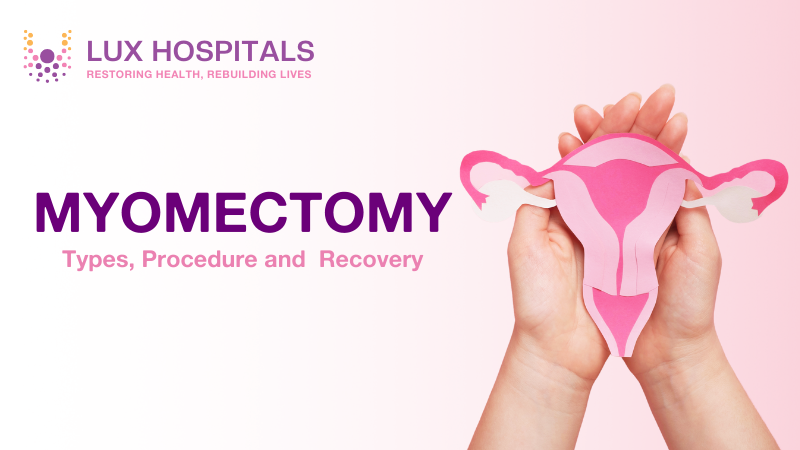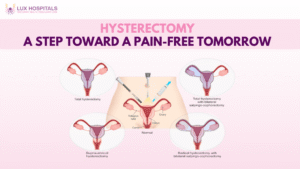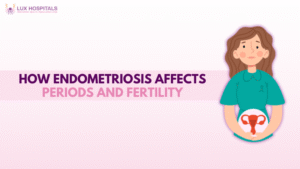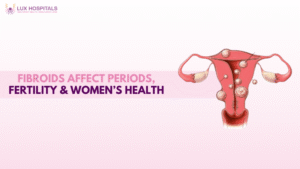What to Expect During Myomectomy Surgery and Recovery

Myomectomy is a surgery designed to remove uterine fibroids, which are non-cancerous growths that appear in the uterus. For some, these may cause symptoms such as heavy menstrual bleeding, pelvic pain, and infertility; hence, needing surgical intervention in relief.
Myomectomy surgery may offer hope, but this will walk you through what to expect before, during, and after this procedure. This will walk you through the myomectomy procedure and give you insights into the recovery process.
Understanding Myomectomy Surgery
Myomectomy is typically performed when a woman experiences significant symptoms from uterine fibroids, such as abnormal bleeding, pain, or fertility issues. The procedure can be done in different ways, depending on the size, location, and number of fibroids. The main types of myomectomy surgery include hysteroscopic myomectomy, Abdominal myomectomy, laparoscopic myomectomy, and open myomectomy.
Types of Myomectomy Surgery
There are several types of myomectomy surgery, each tailored to the size, location, and number of fibroids, as well as the patient’s overall health. The main types of myomectomy include:
- Hysteroscopic Myomectomy: This procedure is typically recommended for fibroids that are located inside the uterine cavity. It is minimally invasive and performed through the cervix using a small camera (hysteroscope) to guide the removal of the fibroids.
- The benefits of hysteroscopic myomectomy include a faster recovery time and no external incisions.
- Laparoscopic Myomectomy: Laparoscopic myomectomy, also referred to as minimally invasive or “keyhole” surgery, involves making tiny abdominal incisions and guiding the fibroids’ removal with a camera (laparoscope).
- This approach offers smaller scars, less pain, and a quicker recovery compared to an open myomectomy.
- Open Myomectomy: In some cases, particularly for larger fibroids or when there are multiple fibroids, an open myomectomy may be necessary. This involves a larger abdominal incision, similar to a C-section, to access and remove the fibroids.
- While it may require a longer recovery time, open myomectomy is often the most effective for larger or more complex fibroid cases.
- Abdominal Myomectomy: This is another term for open myomectomy. It is used for fibroids that are located on the outer part of the uterus and require a more invasive approach for removal.
The Myomectomy Procedure: What Happens During Surgery?
Regardless of the type of myomectomy performed, the general process involves several key steps:
- Preparation: Before the surgery, you’ll undergo a physical examination, including blood tests and imaging studies (e.g., ultrasound, MRI) to assess the fibroids. Your doctor will also discuss anesthesia options general anesthesia is commonly used for myomectomy procedures.
- Surgical Steps: Depending on the type of surgery (hysteroscopic, laparoscopic, or open myomectomy), The uterus will be preserved when your surgeon carefully removes the fibroids.
- During a laparoscopic or hysteroscopic myomectomy, small tools are used to cut away and remove the fibroids carefully.
- In the case of an abdominal myomectomy, the surgeon will make a larger incision to access the uterus and fibroids.
- Recovery: After the fibroids are removed, your uterus will be sutured, and you’ll be moved to a recovery area to monitor your condition. Our medical team will manage your pain, and you may be given medications to help with any discomfort.
Recovery After Myomectomy Surgery
The recovery process varies depending on the type of myomectomy surgery you had. These are some general expectations for your recovery:
- Initial Recovery: After surgery, you’ll spend some time in the hospital (usually 1 to 2 days for laparoscopic or hysteroscopic myomectomy and longer for open myomectomy).
- You may experience some cramping, spotting, or discharge after the procedure, which is normal.
- To assist with managing any discomfort, your medical staff will administer pain relief.
- Post-Operative Care: For laparoscopic and hysteroscopic myomectomy, recovery tends to be quicker with less pain and scarring. You should be able to resume your regular activities withwithin a week or two.
- However, for an abdominal myomectomy, the recovery period may take four to six weeks because of the larger incision and the more invasive nature of the surgery.
- Activity Restrictions: To promote appropriate healing following any kind of myomectomy, you must refrain from hard lifting, vigorous exercises, and sexual activity for a few weeks. Throughout your healing, you will receive detailed instructions from your physician.
- Long-Term Outlook: Most women recover fully from myomectomy surgery and experience a reduction in fibroid symptoms. However, fibroids may return, particularly with the open myomectomy procedure. In some cases, additional treatments or procedures may be recommended.
Conclusion
Myomectomy is a great choice for women who wish to retain their fertility but find symptom relief from uterine fibroids. With the different surgical options available, including hysteroscopic myomectomy, laparoscopic myomectomy, and open myomectomy, there is a method that fits each type of fibroid. Your healthcare professional will decide which course of action is best for you.
Most women can anticipate a smooth recovery with the proper care and attention, albeit the recovery process varies based on the treatment type. We would like to discuss your alternatives and guarantee the best possible outcome. Consult our specialists at lux hospitals to discuss your options and receive top-quality care for your health and well-being.
Frequently Asked Questions
The best surgeon for laparoscopic myomectomy is a gynecologic surgeon or a specialist in minimally invasive surgery. Lux Hospitals has some of the best myomectomy specialists, offering expert care for this procedure.
Yes, myomectomy is a major surgery because it involves removing uterine fibroids, which may require substantial surgical intervention. The extent of the procedure depends on the approach used, whether it’s hysteroscopic, laparoscopic, or open surgery.
Fibroids can grow back after myomectomy, typically within 5 to 10 years, depending on the individual and the type of surgery performed. Recurrence is less common with minimally invasive methods.
Healing from myomectomy typically takes 4 to 6 weeks, depending on the type of surgery. Recovery time is shorter for laparoscopic or hysteroscopic procedures, while open surgery may require a longer recovery period.
You can typically try to get pregnant 3 to 6 months after a myomectomy, once your uterus has fully healed. It’s important to follow your doctor’s advice and ensure your recovery is complete before attempting pregnancy.
A myomectomy surgery typically takes 1 to 3 hours, depending on the size, number, and location of the fibroids, as well as the type of procedure (hysteroscopic, laparoscopic, or open).
The success rate of laparoscopic myomectomy is generally high, with around 80-90% of women experiencing significant symptom relief and improvement in fertility. However, the success can depend on factors like fibroid size, location, and overall health.
The risks of laparoscopic myomectomy include infection, bleeding, injury to surrounding organs (like the bladder or bowel), blood clots, and recurrence of fibroids. Additionally, there is a small risk of complications related to anesthesia. Your doctor will assess your individual risks before the procedure.




















